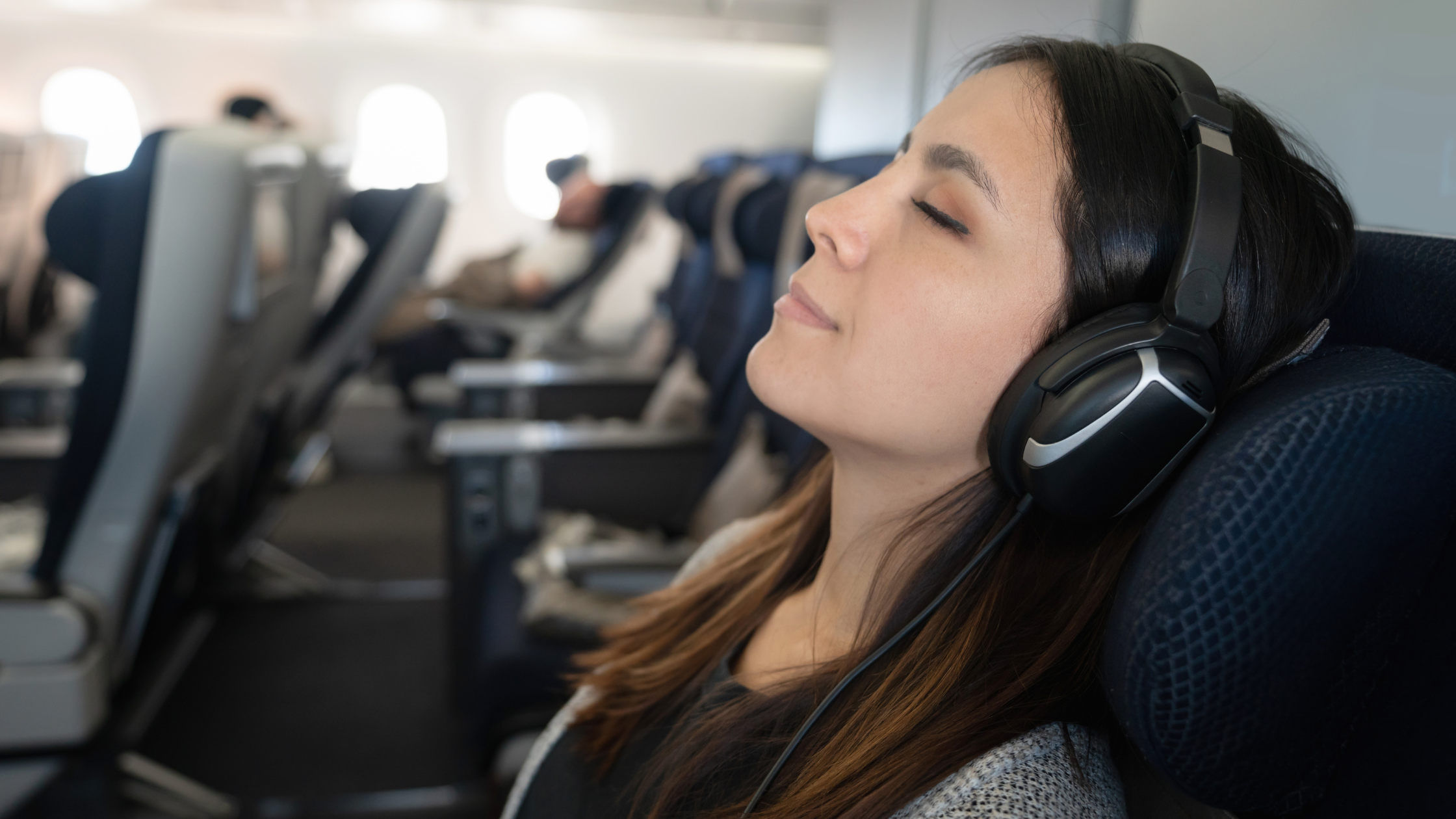
Flying can be one of the biggest disruptions to your sleep. It's hard to get adjusted to a new time zone before you arrive, especially after long flights. The seats are narrow, the engines are loud, there is no leg room, and your passengers don't care about your need to sleep when they have to go to the bathroom or want to keep the reading light on.
So, are you just doomed to have bad sleep every time you take a long flight and be exhausted when you arrive to your destination? Not necessarily. Continue reading to learn how actually sleep on a plane.
Four Tips Before You Book
If you want to get good sleep on the way to your destination, there are four things that are necessary to do prior to booking your flight.
- Flight direct, when possible, on very long flights so your sleep is as uninterrupted as possible.
- Try to choose a window seat so you have something to learn against.
- Reduce what you stow under the seat in front of you so you can have extended leg room.
- Try to reduce your liquid intake or eating upsetting foods that can increase the number of trips that you must take to go to the bathroom.
Finding the best seat for sleep
If you can finally afford a first-class seat, they are without a doubt the best seats for flying as they often allow travelers to fully extend their seats for a flat-lying surface. They are also at the front of the plane, away from the engine for a quieter and smoother ride.
If you are in economy or the main cabin, then you have some other options for where to sit. The closer you are to the front, the better. If you have a choice between middle, aisle, and window, then try for the window seat so you can lean against the window and you won't have other flyers climbing over you.
If the window is not an option, then the next best thing is the aisle. You can stretch out your legs after the services have finished taking up space between the rows. Being in the middle seat is okay as well, as you can try and claim the armrests, but it's important to put as much as you can in the overhead bins to maximize your leg space. Once you begin flying, you can see if there is another seat that may be better suited and have more space.
Pack onboard sleep kit
When you pack your carry-on, make sure to include some sleep items as well. These items can include a sleep mask and a compression socks to help you avoid swelling and discomfort. Neck pillows can also provide extra support for your neck and an eye mask can keep out lights that could disrupt your sleep.
Planes are cold and a shawl or small blanket can help keep you warm and snuggly throughout the night. Most planes include pillows and blankets for those long flights, so check with the airline before actually bringing your own materials to the plain.
If you use sleep aids, then it's important to pack those in your bag as well. Natural sleep aids, magnesium, and valerian may help to improve sleep quality. Melatonin can also be effective in reducing jet lag.
Noise cancelling headphones or high-quality earplugs can also be great for blocking out sleep-disturbing noise. Cabins can get louder than vacuums, but by having something to block out the noise, you can overcome this for a good night's rest.
Squeeze in Cardio and Movement
If you want to get a good night's rest, then arrive to the airport early and tired. This doesn't just ensure that you arrive early enough for your flight, but also gives you enough time to get in a 30-minute stroll. This 30 minutes of exercise can boost the sleep quality that you get that evening.
Wear Layers
As stated earlier, planes are often cold or super hot. In order to best prepare for either situation, wear layers so you can snuggle up or cool down. Being in a freezing room, or super hot room, is not enjoyable or conducive for sleep. Easily removable items like scarves, jackets, and warm socks can help you create your own temperature control. If you still are too cold to sleep, then you can fill up a disposable water bottle with hot water and cuddle up with that.
Hydrate - To a Degree
The cabin air is very dry which can lead to the discomfort of scratchy throats, irritated eyes, and other conditions that do not help with sleep. Drinking water before your flights can help battle these, but if you overfill your bladder, then you will be up and down for the rest of the flight. The best ratio is 8 oz of water every hour that you're in the air. You can make adjustments as needed, but this is a good place to start.
Reduce Caffeine and Alcohol
The 8oz. rule is great - for water. But it's important to avoid other beverages like caffeine and alcohol. Both of these beverages are diuretics, which means that they cause increased trips to the bathroom. Caffeine also keeps your brain alert and is counterintuitive for sleep. And Alcohol can interrupt REM sleep, cause dehydration, and kickstart your vacation with a hangover if you drink too much.
If you struggle to fall asleep, and travel long distances often, then please click the orange button below to take a free online sleep test and talk with one of our sleep health professionals. 
https://www.sleep.com/travel/how-to-sleep-on-a-plane
